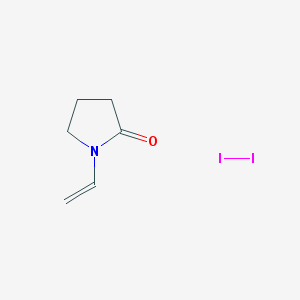-
Categories
-
Pharmaceutical Intermediates
-
Active Pharmaceutical Ingredients
-
Food Additives
- Industrial Coatings
- Agrochemicals
- Dyes and Pigments
- Surfactant
- Flavors and Fragrances
- Chemical Reagents
- Catalyst and Auxiliary
- Natural Products
- Inorganic Chemistry
-
Organic Chemistry
-
Biochemical Engineering
- Analytical Chemistry
- Cosmetic Ingredient
-
Pharmaceutical Intermediates
Promotion
ECHEMI Mall
Wholesale
Weekly Price
Exhibition
News
-
Trade Service
The traceability research of the new coronavirus is not only an important scientific issue, but also a hot spot of global concern
Emerging and recurring infectious diseases are a major threat to global health, economy and security
In order to effectively change this trend and deal with new infectious diseases in the future, it is necessary to study the source and intermediate hosts of newly discovered pathogens
Drawing lessons from the past history of "war epidemics" between humans and coronaviruses, influenza viruses, and HIV, the researchers pointed out that scientific research on the traceability of the new coronavirus requires attention: finding a host with relevant geographic and ecological relevance requires a large amount of accumulation.
At present, many studies around the world have shown that the chrysanthemum bats in China, Cambodia, Japan, Thailand, the United Kingdom, Bulgaria, Kenya and other places all carry the new crown-related coronavirus, suggesting that such bats may be the natural host of the new crown virus
Among them, the genome similarity of the bat coronavirus RaTG13 and the new coronavirus is 96.
Academician Gao Fu, in collaboration with Wang Qihui, Qi Jianxun and other teams, published a Cell article on May 24, 2021, pointing out that RaTG13 has a significant gap with the new coronavirus in terms of the characteristics of the binding receptor and the host range
Current research suggests that pangolins are one of the possible intermediate hosts, and there are at least two new crown-related coronaviruses in pangolins, GX/P2V/2017 and GD/1/2019
Mink may also be an intermediate host.
According to the experience of the "war epidemic", the spread of the new coronavirus from the natural host to the intermediate host requires the two hosts to be geographically close and have ecological connections
By analyzing the global distribution of 98 species of chrysanthemum bats, 8 species of pangolins, and European mink, combined with the detection of new crown-related coronaviruses in many places around the world, the researchers proposed, including Southeast Asia, southern China, South Asia, Europe, and Sahara Many locations around the world, including South Africa, are hotspots for the evolution of the coronavirus, and may play a role in the evolution of the new coronavirus
In addition, through evolutionary analysis, the author believes that the early new coronavirus sequences are mainly divided into two categories, and the new coronavirus in the South China Seafood Market in Wuhan belongs to the relatively late category
Therefore, the new coronavirus in the South China seafood market may come from other places
The WHO-China Traceability Joint Report also believes that the possibility of introducing the new coronavirus through the cold chain/food chain exists
At the same time as this study was published, new evidence continued to emerge.
Therefore, just like the traceability of influenza virus and HIV, the traceability of the new coronavirus requires long-term and patient scientific research.
Original source:
Original source:Wang, Q.
, Chen, H.
, Shi, Y.
et al.
Tracing the origins of SARS-CoV-2: lessons learned from the past .
Cell Res (2021).
https://doi.
org/10.
1038/s41422 -021-00575-w.
in this message







